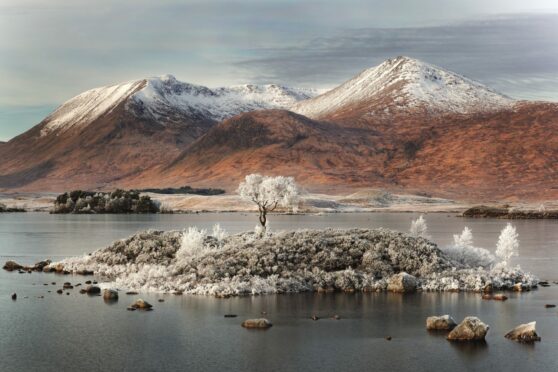
One of Scotland’s veteran mountain rescue leaders fears the easing of lockdown restrictions could mean inexperienced walkers putting themselves in danger in Scotland’s high country.
John Stevenson and the Lochaber Mountain Rescue Team has the challenging task of covering Ben Nevis, the UK’s highest mountain, which attracts more than 160,000 people a year all wanting to reach the 4,413ft summit.
But even Stevenson was surprised by the surge in staycation rescues in 2021 and is fearing more this year. The team had a near record number of call-outs last year as more people took to the hills in the pandemic.
“The type of call-outs remain the same – from sprains and slips to people wandering dangerously off course – but the staycation boom has changed significantly who is being rescued,” he said.
“We are seeing a lot more people who arrive in campervans and feel they have to tick off the Ben because it is something you must do. But they have no idea what is involved. They just think it is a nice day and we will walk up Ben Nevis.
“A number of them are just not prepared. We have seen all kinds of footwear – dress shoes, wellies, trainers, flip flops, Crocs – you name it we’ve seen it. We have even had people saying they will go up the north face. They don’t know how dangerous they make the mountain. The mountain is not dangerous – it is the way people tackle it.
“Too many are inexperienced, they don’t have the right clothing or enough water. The Ben has its own weather – we have had snow at the summit in summer before. Conversely we have had to deal with people who are dehydrated or simply have wandered off and found themselves heading into danger. Too many can’t navigate. It all comes down to poor planning. Later in the year the early nights catch a lot out too.
“People think getting to the top is it, but 90% of the accidents happen on the descent. About a third of our call-outs are down to people just not being prepared, especially staycationers who just don’t know what they are letting themselves in for. They see the Ben and say, ‘it’s there, let’s give it a go’. And this year we are expecting even more.”
Scots are now spending more time outdoors than they did before the pandemic. A survey by NatureScot last week revealed that half of Scots are pledging to head outdoors more often and enjoy nature with two thirds of home workers expecting to increase their time spent outside.
The Lochaber team is seeing that trend, with 112 emergencies last year – all but a dozen related to the hills, and the vast majority to Ben Nevis.
In 2020, they only dealt with around 80 rescues, reflecting periods of travel-restrictive lockdown.
Each year the team tragically deal with around half-a-dozen fatalities on average. “I am surprised we had so many call-outs last year, but it just shows that people needed to get out for their mental and physical wellbeing,” added Stevenson.
“However it puts pressure on the team. We are all volunteers. In fact some people who are rescued think it is our job! We have to raise between £80,000 and £100,000 each year just to maintain the service. We have to replace equipment regularly, some of the ropes can only be used a couple of times for example. None of us gets paid. The guys have jobs and the big worry with the increasing number of call-outs is finding people who can leave their work.”
Another mountain rescue team that sees its share of staycationers is Skye MRT. Team leader Neil Urquhart said the vast majority of its near 50 call-outs last year were in the main tourist months between May and September, when visitor hordes flock to the Misty Isle. There are people who are unprepared, but that’s not everybody,” he said. “The call-outs are the whole spectrum – bad weather, bad luck etc – and we are expecting another busy period.”
To donate www.lochabermrt.co.uk, www.skyemrt.org

Enjoy the convenience of having The Sunday Post delivered as a digital ePaper straight to your smartphone, tablet or computer.
Subscribe for only £5.49 a month and enjoy all the benefits of the printed paper as a digital replica.
Subscribe